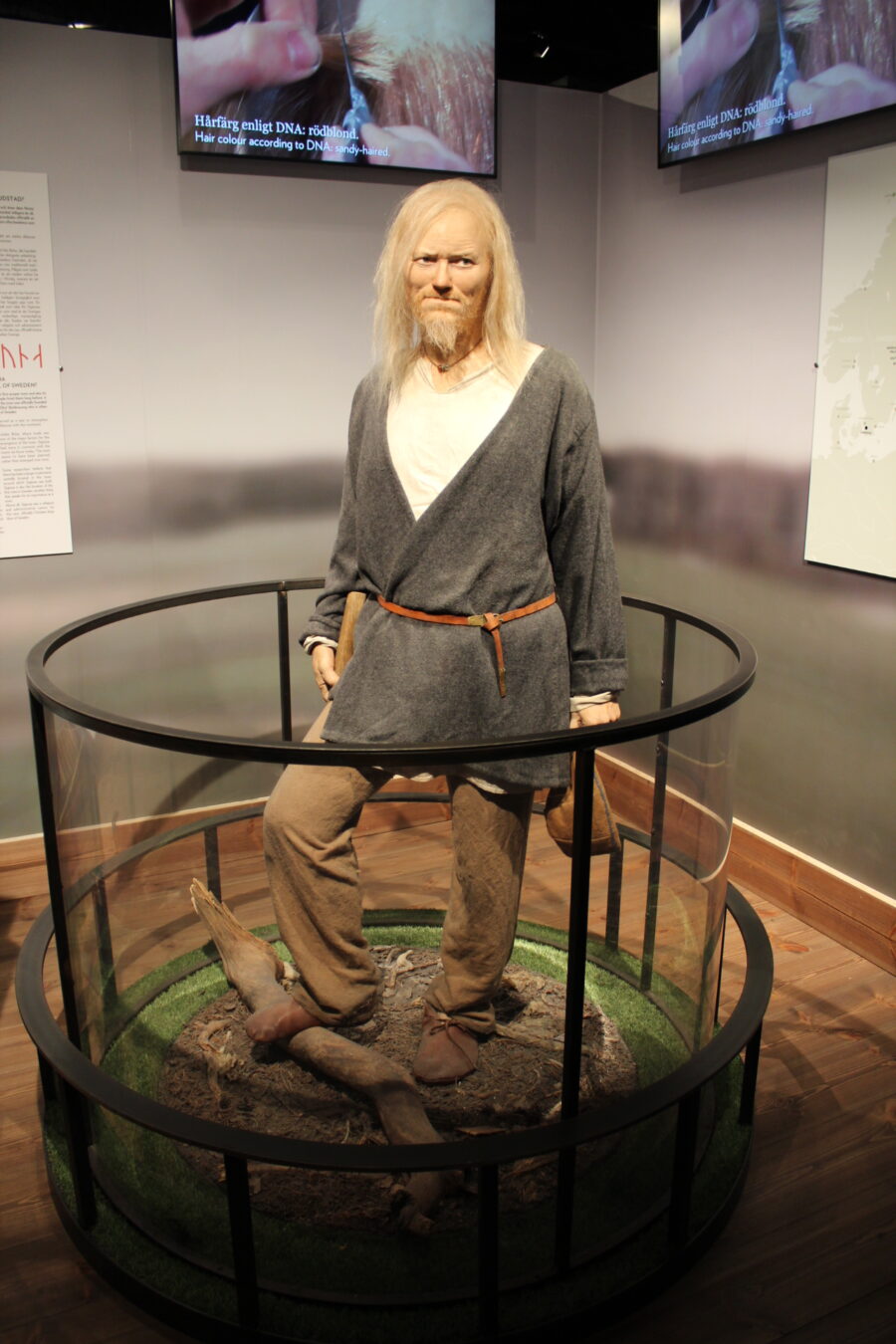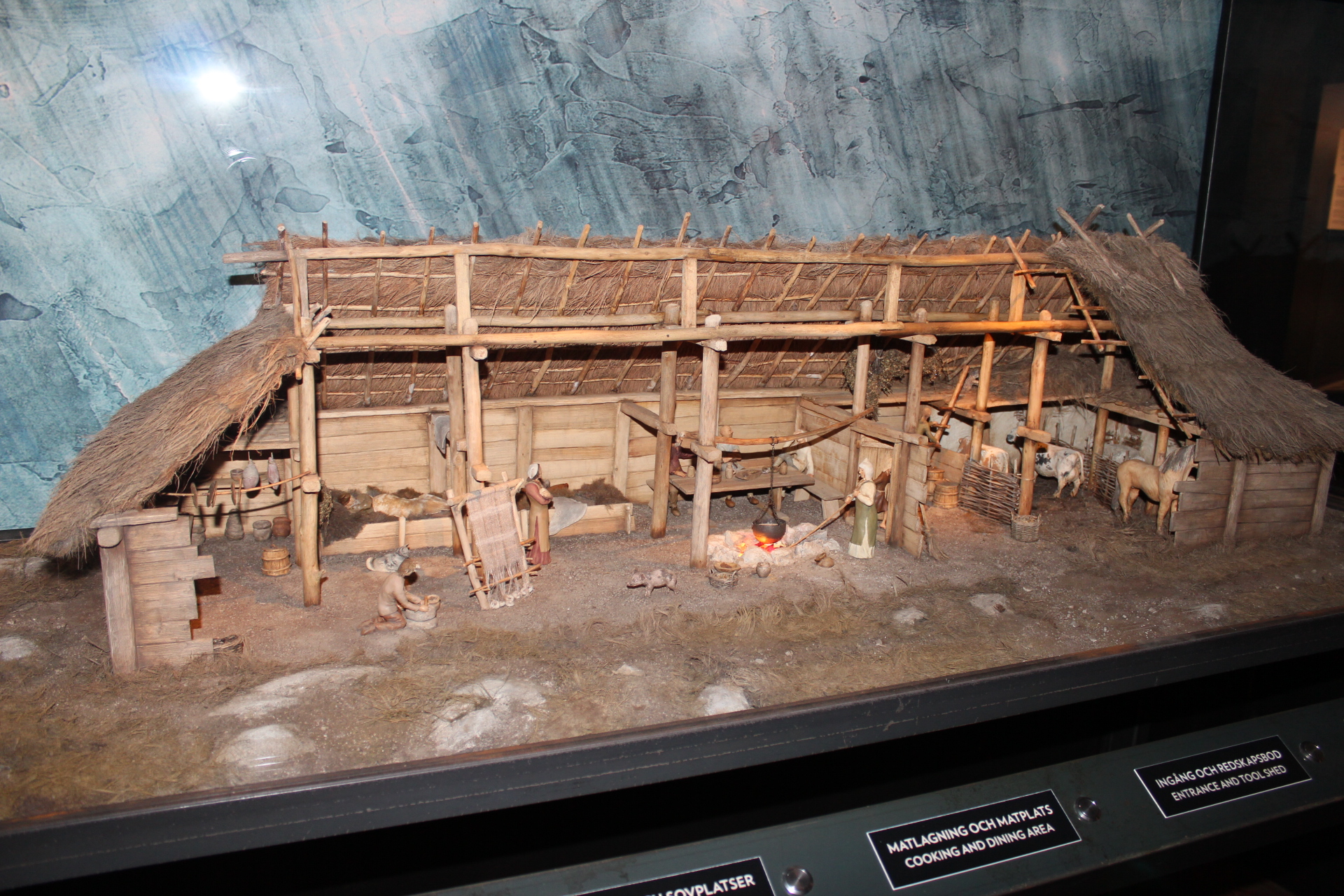NordenBladet – Viking-era longhouses and burial mounds are important archaeological artifacts that provide insight into the Viking way of life.
Viking-era longhouses and burial mounds are an important part of Viking history and provide valuable insight into the way of life of this fascinating and powerful civilization. These artifacts are an important part of the cultural heritage of Scandinavia, and they are preserved today through archaeological excavations and museum displays. Many of these sites are also open to visitors, offering a unique opportunity to experience the history and culture of the Viking era.
In addition to providing information about daily life, longhouses and burial mounds also offer insight into Viking religious and cultural beliefs. For example, some burial mounds were constructed in specific patterns, such as in the shape of a ship, which suggests that the Vikings believed in the afterlife and the importance of a proper send-off for the dead.
Longhouses: Viking-era longhouses were large, rectangular buildings that were used as homes and community spaces by Viking families. These houses were often built using wooden poles and thatched roofs, and they could be up to 80 feet long and 20 feet wide. Longhouses were typically divided into several rooms, including a central hearth room and several smaller rooms for sleeping and storage. Viking longhouses were an important aspect of Viking society and were used for both living and working, serving as the center of daily life for families and communities.
14 questions with answers and facts about Viking Longhouses:
Why did Vikings live in longhouses?
One end of the Viking longhouse was used to house cattle and other animals as well as stored crops and other tools. The opposite end of the longhouse was often set up for the Vikings to create artisanal crafts. The center of the longhouse hall was reserved for living, sleeping, cooking, and eating.
What is a Viking longhouse called?
Throughout the Norse lands, people lived in longhouses (langhús), which were typically 5 to 7 meters (16 to 23 ft) wide and anywhere from 15 to 75 meters (49 to 246 ft) long, depending on the wealth and social position of the owner.
How long did a longhouse take to build?
It depends on what resources and materials were available. A possible estimate is one to two years (the reconstruction took one year to build), but we must also consider that the house seems to have been continually added to and maintained.
What are the disadvantages of a longhouse?
Longhouses were notoriously smoky as the fumes from cooking and fires could only escape through small holes in the ceiling. Villages of longhouses were built in the forest, usually near water. They were surrounded by tall palisades or sharpened logs stuck vertically in the earth.
How many fires were in longhouses?
Fireplaces or hearths were spaced down the length of a central corridor in the house (an average of 1-6 fires), and were flanked with two platforms: the lower for sleeping, and the upper for food and storage.
Who lives in a Viking longhouse?
A Viking family—often an extended family—all lived in the Viking longhouse, where they ate, worked, talked and slept with little or no privacy.

What is inside a longhouse?
Dried meats and corn, as well as other food and personal belongings, were stored on platforms built high up on the walls of the longhouse. Firewood was stacked in areas near the entrances at either end of the structure. Covered pits dug inside the house also stored food.
Why did Vikings cover their houses in grass?
The Vikings, however, had brought with them a solution: turf homes, something already popular in Norway and many places in Scandinavia. For the next millennium or so, these grass-roofed dwellings protected Icelanders from blistering winds, rains, and even earthquakes.
What was the purpose of longhouses?
Longhouses have another thing in common besides their shape: they were built to serve as a home for a large extended family. An extended family includes a number of family units consisting of parents and children, plus grandparents, aunts, uncles, cousins, etc.



What are some facts about Viking longhouses?
Despite the harsh living conditions, the Norse who occupied longhouses tried to make the longhouses as comfortable as possible. Viking houses were built of wood. The longhouses had bowed walls in plan, forming a ship-like outline. The walls were lined with clay or consisted of wooden planks placed vertically into the ground, which supported the roof, along with two rows of internal posts. Outside the house was often supported by sloping posts.
How long was the longest/largest longhouse?
The biggest longhouse ever found was excavated in 1983 in Lofort, Norway. It was most likely a chieftain´s house, and it was initially 22ft. (67 meters) long. It was built around 500 AD and upgraded around 700, extending it to 83 meters.
Did Viking houses have toilets?
Interesting enough, according to the BBC Primary History site, there were no bathrooms in the Viking home. Most people probably washed in a wooden bucket or the nearest stream. Instead of toilets, people used cesspits, which are holes dug outside for toilet waste
How many rooms are in a Viking longhouse?
Interior: On the inside, the Longhouse was just one long room. But Viking families found a way of dividing up the space for better use using rows of wooden posts.
Do any Viking longhouses still exist?
In Garðabær town, which is a part of the Great Reykjavík Area, a Viking Settlement Age farm was discovered back in 1986. This large Viking longhouse dates back to around 870-930 and is 8 x 30 meters on the outside, but the inside floor surface is 170 sq. m.
7 questions with answers and facts about VikingBurial Mounds:
Burial Mounds: Viking-era burial mounds are another important aspect of Viking society. These mounds were built to honor the dead and were typically located near the longhouses where the deceased lived. Viking burial mounds were usually constructed using stone and earth, and they were often topped with a large stone or wooden marker to commemorate the dead. The burial mounds themselves were also an important part of Viking culture, with some mounds being used as communal graves for entire communities, while others were used to honor important leaders or warriors.
What are Viking burial mounds called?
Tumuli are also known as barrows, burial mounds or kurgans, and may be found throughout much of the world.
What is a burial mound?
Burial mound, artificial hill of earth and stones built over the remains of the dead. In England the equivalent term is barrow; in Scotland, cairn; and in Europe and elsewhere, tumulus.
Why are graves mounded?
Before burial vaults, when coffins were made of wood, the coffin would eventually collapse in on itself, leaving a depression at the grave site. Mounding was protection against that.
Why were Vikings buried with horse heads?
Why the Vikings were buried with male horses is unclear, although it may have had to do with an association between stallions and virility, according to zooarchaeologist Albína Hulda Pálsdóttir of the University of Oslo. However, she notes, horse burials were not reserved for men.
Did Vikings get buried with their wives?
So it must have been some kind of comfort for a relatively important Norseman to know that, when they died, they’d be shuffling off this mortal coil through a grave crowded with friends, wives, slaves, pets, and livestock—all dead, of course.
Have any Viking graves been found?
Many of the 60 or so Viking Age graves discovered in Oslo have been found by construction workers. Many of these were found at the very beginning of the 20th century when Oslo underwent rapid expansion, including areas such as St. Hanshaugen, Grünerløkka, Bjølsen, Tåsen and Sinsen.
How did Vikings bury their deceased?
Cremation (often upon a funeral pyre) was particularly common among the earliest Vikings, who were fiercely pagan and believed the fire’s smoke would help carry the deceased to their afterlife. Once cremated, the remains also might be buried, usually in an urn.
In conclusion, Viking-era longhouses and burial mounds are an important part of the cultural heritage of Scandinavia, and they offer a unique and fascinating look into the daily life, religious beliefs, and cultural practices of the Viking era.
All images: The pictures were taken at the Viking Museum in Sweden (NordenBladet/Helena-Reet Ennet)
Read also:
THE DARK HISTORY of witch trials in Scandinavia
EXHAUSTIVE OVERVIEW: who were the ancient Scandinavian origin Vikings and when was the time of the Vikings?
From Finland to the forests: THE STORY and the legacy of the Forest Finns

